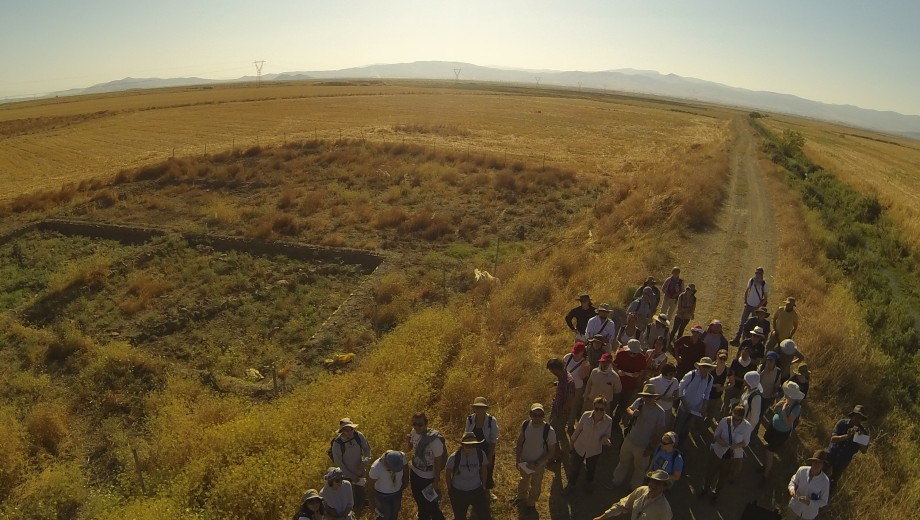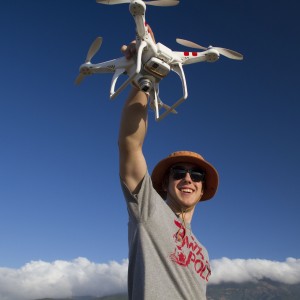In 1906, when Oriental Institute (OI) founder James Henry Breasted led an expedition to survey the temples of ancient Nubia, his team used state-of-the-art techniques.
Perched on wooden scaffolding, a photographer took pictures of inscriptions and developed them on the spot. Breasted compared the black and white photos with the temple walls, noting by hand any details that the camera had missed. The group carried the images by camel and by ship along the Nile, organizing their findings back in Chicago after the Egyptian season ended.
Today students and faculty in Near Eastern Languages and Civilizations (NELC) investigate the ancient world using tools that would have startled scholars even a generation ago. In fields from cuneiform studies to Egyptology, a digital revolution has begun.
*****
In a darkened lab in Wieboldt Hall, a dozen grad students and faculty members sit quietly at computers as PhD student Tytus Mikolajczak explains the basics of Adobe Illustrator, a software program used for drawing.
Experts in Sumerian grammar and Babylonian political history are learning different skills today: how to move a computer mouse to select a passage of cuneiform script, the first step toward making digital copies of cuneiform tablets.
The session is part of a workshop called Essential Graphic Design for NELC Students, which Mikolajczak, AM’10, taught this past winter with an innovation grant from the University Office of the Provost. Before coming to Chicago to study the Elamite language—the key to pursuing his dissertation research on ancient Persian accounting texts—Mikolajczak worked as a graphic designer in his native Poland.
The skills from that job transferred easily to his scholarly work. He uses Adobe Photoshop and Illustrator software to manipulate digital images of ancient tablets from the OI’s Persepolis Fortification Archive, for example, and to create digital drawings of seals from impressions made on clay tablets.
Publishers increasingly require scholars to submit articles with digital photos and drawings of objects they’ve studied, but academic programs don’t teach those skills. Mikolajczak conceived the workshop to share his knowledge, hoping to “level the ground” so that even students without art training can produce high-quality images.
Last fall he also tutored Theo van den Hout, NELC’s department chair and a professor who studies the Hittite and Anatolian languages, in Illustrator. For a 2010 book featuring cuneiform tablet fragments from Boghazköi, Turkey, van den Hout made 254 drawings by hand, using pencil and ink.
That artisanal approach has long been standard practice, and van den Hout says he “loved the work,” but he plans to produce the next volume digitally. Using a tablet computer and stylus, scholars can trace digital photographs of ancient objects held in museum collections anywhere, making the documentation process virtual, efficient, and accurate.
“Once you have the drawing on the computer, you can do anything with it. You can shrink it, enlarge it, and correct it endlessly, and it always stays nice and sharp,” says van den Hout. “I don’t think anyone will go back to the old-fashioned method.”
*****
At archaeological dig sites, technology is transforming every phase of research. Oriental Institute scholars pioneered the aerial survey of sites in Egypt, Iran, and Turkey, taking photos from airplanes and hot-air balloons in the 1920s and ’30s and later from helium blimps.
Scholars around the world now use remote sensing, portable X-rays, 3-D scanners, and other sophisticated tools to map and analyze findings.

Last summer in southeastern Turkey, a team from the OI’s Neubauer Expedition to Zincirli sent a digital camera skyward, attaching it with Velcro straps to a helicopter small enough to fit in a backpack. Guiding the device by remote control, they captured photos and video of the site—which contains the ruins of a 3,000-year-old walled city—instantly creating digital records tagged with GPS data.
“In the past you would have to do hand sketches and measurements of the site on the ground,” says Miller Prosser, AM’01, PhD’10, a research database specialist and member of the Neubauer Expedition, which Associate Professor David Schloen directs. Digital images, by contrast, are gathered quickly and accurately, allowing scholars to ask questions of their data much faster.
Researchers can load images into a software program that generates 3-D computer models of every square foot of a dig site. “Not only is it flashy, but it’s an incredible step forward in the science of archaeology,” says Prosser. Each day of the expedition, the Zincirli team uploaded the data it gathered to the University’s server, where it is housed in a database called OCHRE, or the Online Cultural and Historical Research Environment.
As a graduate student working on the Persepolis Fortification Archive—which also uses the OCHRE database—Prosser gained valuable training in methodology. “I got to see just how important it was to model data and keep it organized in a certain way,” he says. “That’s part of my job now.”
*****
Scholarly research involving ancient languages and objects has a venerable tradition at the University. NELC doctoral programs are designed to give students a broad and deep knowledge of history, languages, and archaeology, and new technologies build on that foundation
Susan Penacho, AM’08, learned Geographic Information Systems in a graduate course on ancient landscapes; she’s using it extensively in her dissertation work on Nubian fortresses. Andrew Dix, AM’06, AM’08, uses FileMaker Pro to maintain a database of more than a thousand neo-Babylonian legal texts he is analyzing for his dissertation. Working as research assistants on OI projects, other students have learned a technique called polynomial texture mapping (PTM) to create bright digital images that allow the virtual study of artifacts from every angle.
Young scholars at UChicago also gain valuable training in the “old ways,” says doctoral student Oya Topcuoglu, AM’08: extensive language study, copying ancient texts by hand, and archival research.
Topcuoglu is writing her dissertation about the art in seals found at Kanesh, a second-millennium commercial settlement in Turkey. Because she could not obtain physical access to most of the objects, she has relied on published photographs in books from the OI library, which she calls “the best Near Eastern library in the Western Hemisphere.”
She hopes to learn digital drawing techniques for future projects and expects both younger and older scholars to adopt novel tools as the need and opportunity arise. “This new technology is coming in, gradually as it may be,” says Topcuoglu. “It has its foot in the door.”


